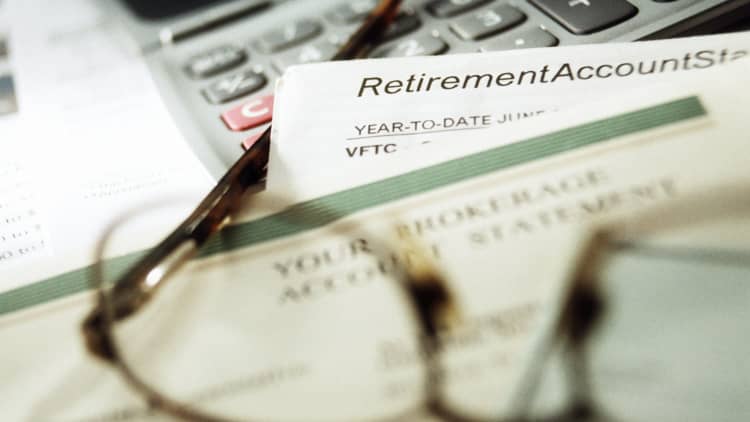
Volatile markets can leave investors seriously on edge, especially as they get closer to retirement, and those who are already retired may be even more worried about losing money — and may start to question their strategy.
The American College recently surveyed financial professionals to determine how their clients reacted to a significant drop in the Dow Jones Industrial Average and found that the majority of retirees show heightened concern. Three out of five respondents said retired clients have been more apt to reach out to them due to recent market volatility and more than half of their clients admit they are more concerned about retirement security than they were last year.
Most financial experts agree dumping stocks or cutting back on your exposure to equity mutual funds and exchange-traded funds is not the best way to calm your fears.
"You don't want to sell low — that's the worst thing you can do," said Professor David Littell, retirement income program director at The American College of Financial Services. "If you are years away from retirement, the fact that your account goes up and down doesn't matter. Just don't open your statement for a couple of weeks," he said.
Even if you're near retirement or are recently retired, financial advisors say most investors in their 50s and 60s will need to have a significant portion of their retirement portfolio in stocks for long-term growth.
"That 65-year-old is looking at potentially 30 years in retirement," said John Sweeney, executive vice president of retirement and investing strategies at Fidelity, the nation's largest provider of retirement plans. "Equities are the 'five-years-plus' part of your portfolio," he added, meaning that funds in your 401(k) plan, IRA and other retirement accounts that you don't need for five years or more should be invested in stocks, since research has shown that over a period of five years or longer, stocks generally perform better over other assets.
Invest your age
So what should that investment mix look like in a volatile market? That depends on your goals, not the markets. Financial advisors say you need to have a plan that reflects your time horizon (when you want to retire and how long you plan to be in retirement) and your tolerance for risk (how much of a drop in your retirement balance can you stomach and really afford). Then you should choose an investment mix that you are comfortable with, which may look like this:
- Young investors: For young investors in their 20s and early 30s, an aggressive growth portfolio could be invested in 85 percent stocks (60 percent U.S. stocks and 25 percent foreign stocks) and 15 percent bonds.
- Mid-career: For those in the middle of their career — in their 30s, 40s and perhaps early 50s — a growth portfolio may consist of 70 percent stocks, 25 percent bonds and 5 percent short-term investments.
- Near retirement or newly retired: A balanced portfolio would have 50 percent stocks, 40 percent bonds and 10 percent short-term investments.
- Retirees: Conservative investors would instead have 50 percent of their portfolio in bonds, 30 percent short-term investments and 20 percent in stocks.
But before you choose your investment mix, make sure to have a comprehensive financial plan. That should go a long way in helping to calm your fears when the stock market slides.
— By Sharon Epperson, senior personal finance correspondent






